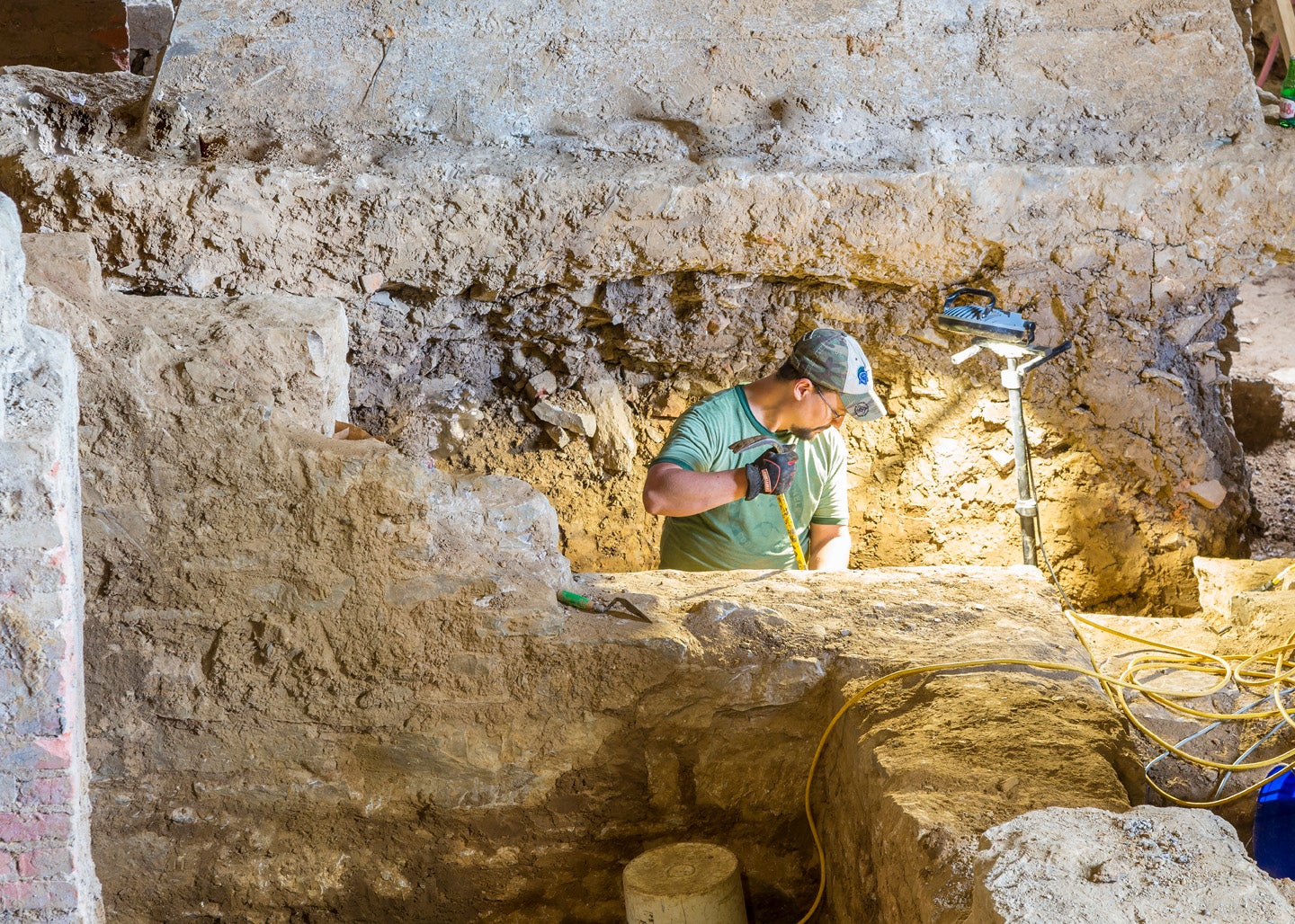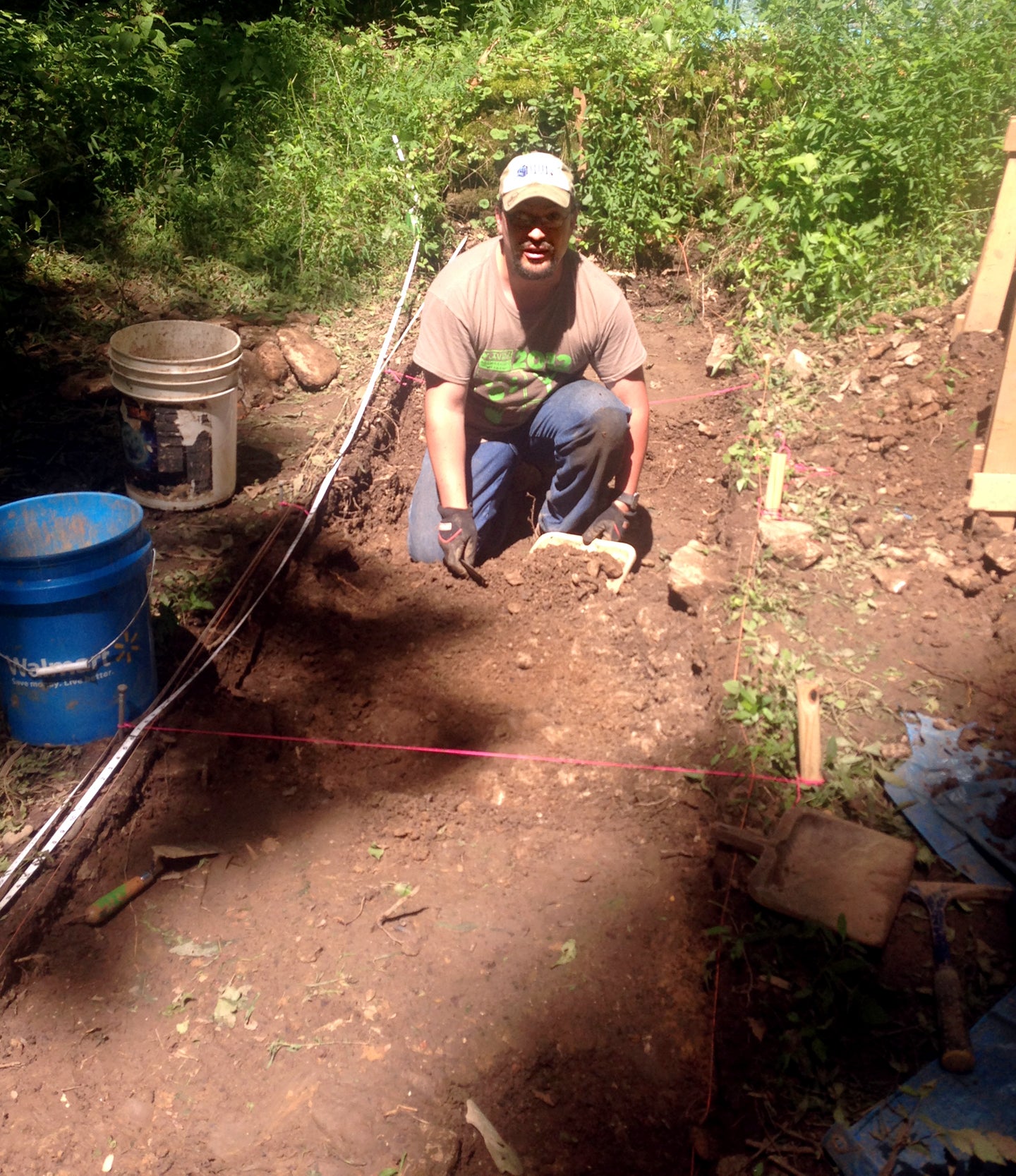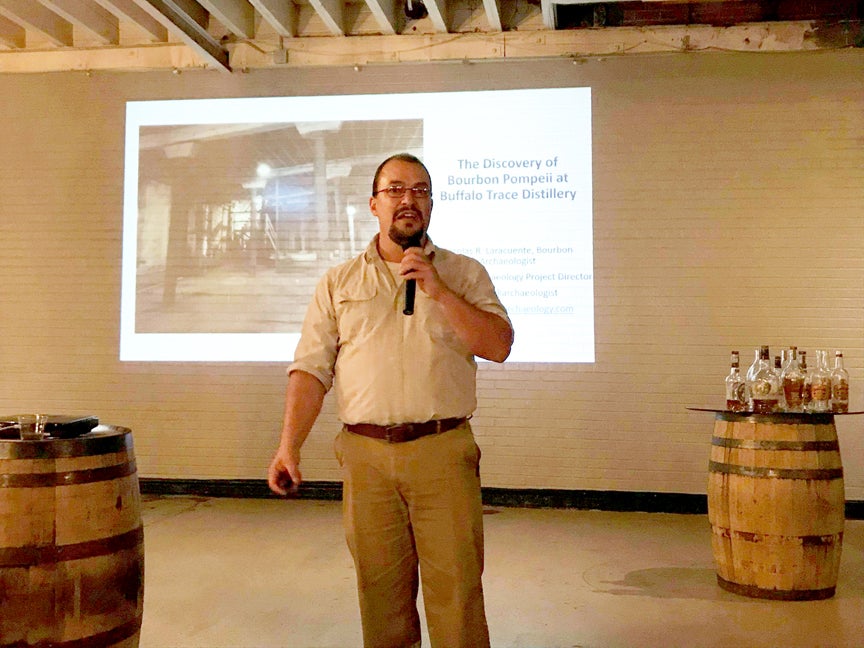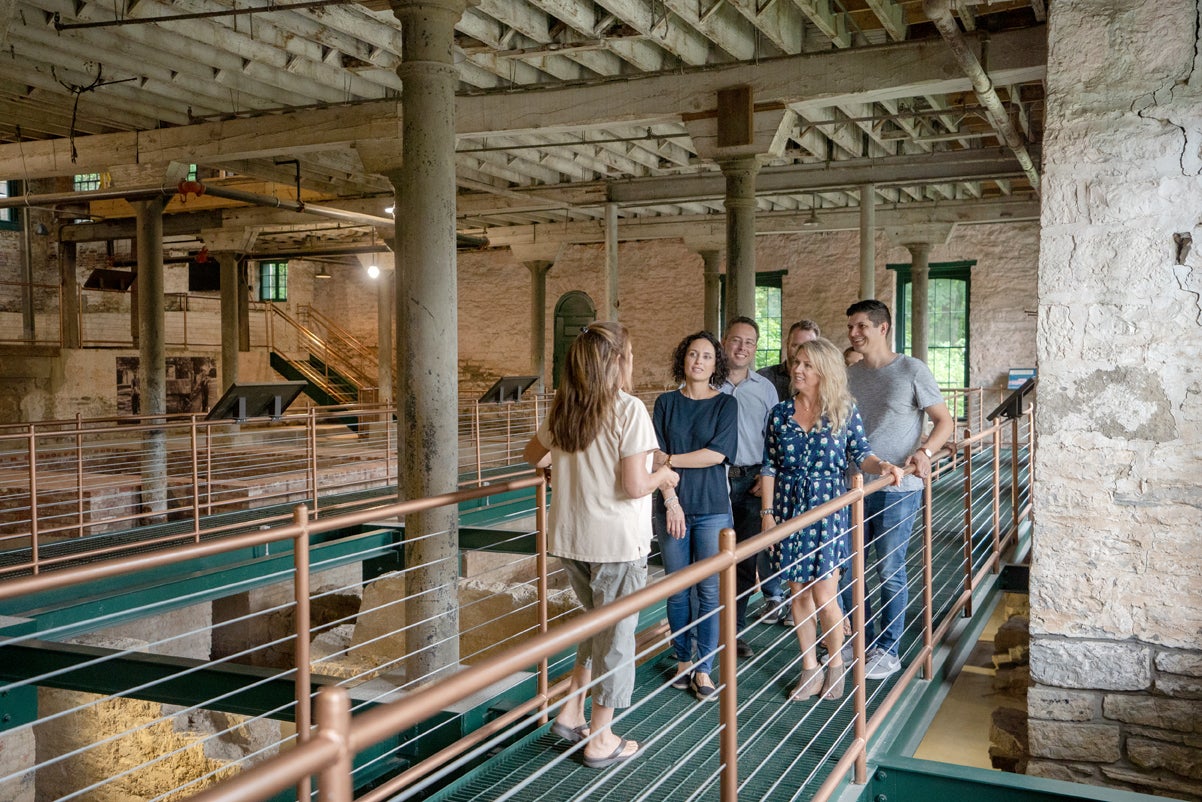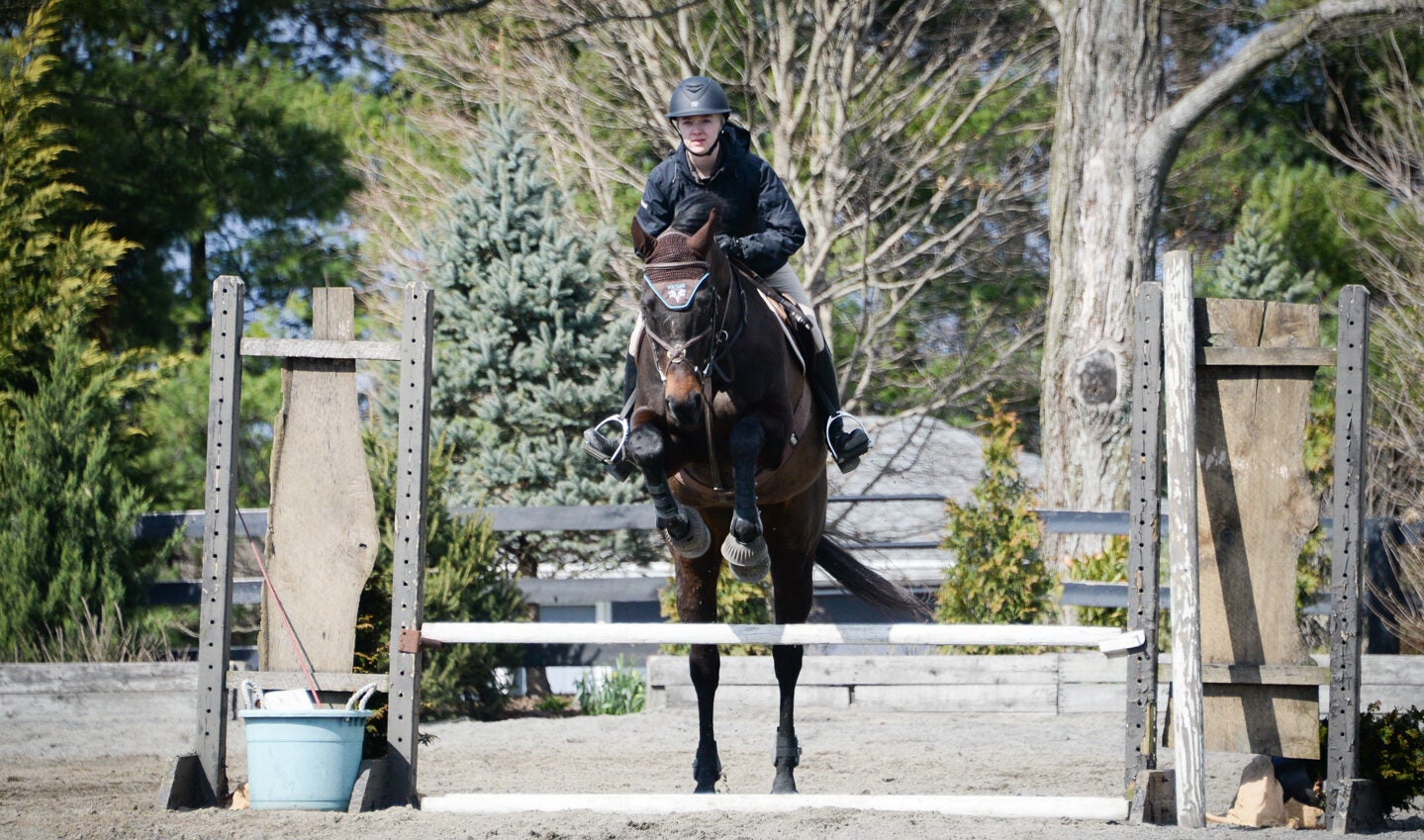Nicolas Laracuente loves to talk about the things that interest him most — bourbon and history. A cross between Indiana Jones and Jim Beam, Laracuente is a one of a kind in Kentucky — a bourbon archeologist. His job takes him to the sites of known and relatively unknown bourbon distilleries throughout the area.
He’s probably best known for his work at Buffalo Trace where he uncovered the remains of damaged or destroyed rick houses and distilleries from the 1800s. Bourbon Pompeii, as it’s called, is a still active archeological dig that gives researchers insight into what making bourbon was like then.
The Frankfort resident has also spent time in Woodford County, at the Jack Jouett House where he found the remains of Jouett’s distillery, and most recently at sites of small family distilleries that were once well-known and respected.
For him, finding the remains of a centuries old bourbon distillery is like a walk back in time.
“So what is archeology, right? Archeologists look at what’s left behind by humans,” he said. “And what we’ve been able to find is the way these distillers worked back then.”
He’s found hand-made bricks on sites that show how the buildings were made. And they’ve found copper pipe that point to how making bourbon hasn’t changed much over the course of years. They’ve even found the remains of dinner.
The long-standing roots bourbon distilleries have in our area are appealing to Laracuente. An Army brat, it wasn’t until he entered sixth grade that his father settled down. In fact, they lived in 13 different places around the world before they settled in Grayson County where Laracuente went to middle and high school.
After getting his undergraduate degree at Tulane University in New Orleans, and his graduate degree from the University of West Florida, he started work on his Ph.D. Now, he lives in central Kentucky and works as the manager of site protection services for the Kentucky Heritage Council. He’s also an adjunct professor at Midway University teaching bourbon history, when he’s not digging up bourbon sites, that is.
Bourbon archeology is his passion, he said. For him, becoming a bourbon archeologist was meeting a need that wasn’t filled.
“There just weren’t a lot of archeologists studying the bourbon industry,” he said. “The reason why I started my work was that most of the distilleries that have been looked at before were industrial distilleries. No one had ever really looked at moonshine stills and smaller distilleries. My theory was that when we looked at these smaller sites we were going to find moonshine still, but that they would be in an area that was optimal for producing whiskey.”
That’s what he’s finding in Versailles as he looks into the Epler Distillery. Marianne Epler and her brother operated the distillery and Laracuente has been able to find plates, button and other pieces of the Epler family’s life next to pieces of copper from the distillery.
“It was a legal distillery from the Civil War up until the 1900s,” Laracuente said. “It was a well-known local whiskey, but it was whiskey, not bourbon. There was no aging involved. And what we were able to find there was evidence of where they had taken the product to Clifton and transported it on the Kentucky River.”
There are plenty of distilleries in the area that don’t exist anymore, he said.
But it’s not all Indiana Jones hunting golden idols in a forest. Using online records, public records, historical maps and newspaper reports, Laracuente will investigate a site before going to it and seeing what he can find. Once there, he’ll work to find evidence of where the distillery was located, as well as what evidence he can find of what distilling during that time was like.
Recently, he was approached to look into whether or not he can find what’s left of a distillery that started in Versailles in the late 1700s. In the area that is now known as Big Spring Park, historical records indicate that at one time there was a gristmill and distillery there run by the O’Bannon family. Their master distiller, John Pepper, would go on to be a distiller for Old Crow distillery which would eventually become Woodford Reserve.
But his love of bourbon archeology isn’t without some drawbacks. It has forced him to put some things on hold.
“There’s a sexiness to the bourbon industry,” he said. “But I found that I had to abandon my Ph.D. work because of it. There was a time when every time we put a shovel in the ground it ended up in the newspaper. You can’t ensure any kind of secrecy to your project, so I decided I needed to walk away from that now.”
Still, he’s working on a book to help the average bourbon lover connect to the area’s past.
“It’s mostly a narrative of what we were finding and how we went about finding it. Not something high-brow, but something people on the bourbon trail might be interested in,” he said. “I view my position in archeology as a bridge between archeology and people who are interested in bourbon or architecture — but they might not realize all the other things archeologists are doing.”

